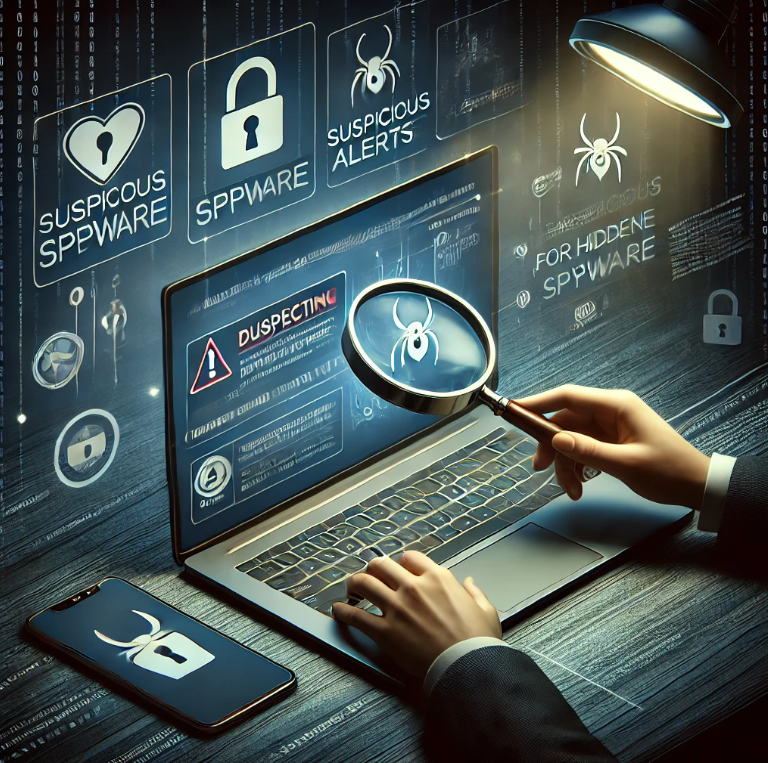In the age of digital connectivity, our personal devices have become treasure troves of sensitive information. However, this wealth of data attracts the attention of malicious software, particularly spyware. Spyware can silently infiltrate your device, compromising your privacy and security. In this comprehensive security tutorial, we’ll explore effective ways to detect spyware on your devices, whether it be your smartphone, tablet, or laptop.

Understanding Spyware: What You’re Up Against
Before diving into detection methods, it’s essential to understand what spyware truly is. Spyware refers to a type of malware designed to collect information about you without your consent. Its goals vary, ranging from harvesting your data to hijacking your login credentials for unauthorized access. Often, it operates unnoticed, leveraging stealth tactics to maintain its presence on your device.
Furthermore, spyware can come in many forms, from keyloggers that capture your keystrokes to software that tracks your online activity. Knowing what you’re up against can empower you to take the necessary steps to safeguard your information.
Signs You May Have Spyware
Detecting spyware is not always straightforward, especially since its presence can often go unnoticed. However, certain signs can signal the presence of this invasive software. One common indication is unusual behavior on your device. For instance, if your laptop virus protection software is continually disabled or if your device experiences random pop-ups, this could indicate spyware at work.
Additionally, significant changes in performance can also suggest an infection. If your laptop feels sluggish or experiences frequent crashes, these symptoms might indeed correlate with spyware or, more generally, malicious software. Thus, staying vigilant about any oddities in device performance is crucial.
Check for Unusual Applications
One of the most effective ways to detect spyware is by reviewing the applications installed on your devices. Both Windows and Mac operating systems provide easy access to your application list. Look for any unfamiliar programs or apps that you don’t remember installing. Often, spyware will masquerade under names that seem innocuous or useful, making it easy to overlook.
In mobile devices, such as smartphones and tablets, navigate to the app settings to find a complete list of installed applications. Pay special attention to apps that request excessive permissions or access to sensitive information. If an application seems suspicious, conduct an online search to determine whether it has had any history of spyware or malware associations.
Monitor Network Activity
Another effective method to detect spyware involves monitoring your network activity. Spyware often transmits the collected data back to a remote server, which means unusual data activity can be a telltale sign of infection. Utilize tools like Task Manager on Windows or Activity Monitor on Mac to monitor active processes, especially network connections.
Moreover, consider using a firewall to check for outgoing data transmissions. If you notice unexpected connections or data being sent without your permission, this could suggest that your device is compromised by spyware. Be proactive in this step to maintain overall security and health of your laptop or other devices.
Utilize Security Software
In today’s technology-driven world, using security software is indispensable. Anti-malware tools are specifically designed to detect and eliminate threats, including spyware. Choose reputable software that regularly updates its database to stay ahead of emerging threats.
When running a scan with your security software, opt for a deep or full system scan. This process may take longer but increases the likelihood of identifying hidden spyware. Additionally, some programs offer real-time protection that actively monitors for suspicious activity. This factor adds an extra layer of defense against any future spyware infections.
Keep Your Software Updated
Regularly updating your operating system and software can significantly reduce your susceptibility to spyware. Developers frequently release updates that patch vulnerabilities, thereby fortifying your device against potential attacks. Thus, enabling automatic updates can save you the hassle of manually checking your software versions.
Besides operating system updates, don’t forget about applications, particularly web browsers and plugins. Since many spyware attacks originate from exploiting browser vulnerabilities, keeping these updated is vital. Therefore, always install updates as soon as they become available to maintain your device’s security.
Regular Backups
While it’s not a direct method to detect spyware, regularly backing up your data can serve as a safety net against potential spyware attacks. If you notice that your device has been compromised, having a recent backup allows you to restore your data without significant loss.
Utilize cloud-based services or external hard drives for effective backups. However, ensure that you scan these backups for spyware before restoring any data onto your clean system. This step prevents reintroducing the same spyware back into your environment.
Safe Browsing Habits
Practicing safe browsing habits emerges as a proactive measure to prevent spyware infection, rather than merely detecting it. Always avoid clicking on suspicious links or downloading attachments from unknown sources. The internet is littered with phishing scams designed to lure you into downloading spyware naively.
Moreover, use privacy-focused browsers and consider employing ad blockers. These tools can significantly reduce the chances of encountering spyware-laden ads and websites. Thus, establishing good web hygiene is as important as running scans on your devices.
Disconnect and Isolate
If you suspect that your device is infected with spyware, swiftly disconnecting from the internet can prevent the malware from transmitting data. This action can limit the damage while you conduct a thorough investigation. Unfortunately, once spyware infects your system, immediate actions may sometimes be necessary to minimize data exposure.
Following disconnection, take the time to run extensive scans and consult reliable security resources for further assistance. Early intervention can be crucial in combating spyware and safeguarding your information.
Final Thoughts: Empower Yourself Against Spyware
In conclusion, detecting spyware is an essential aspect of maintaining your digital security. By staying vigilant, utilizing effective tools, and practicing safe online habits, you can significantly reduce your risk of infection. Remember, with the right knowledge and proactive measures, you can safeguard your devices against the lurking threat of spyware. Taking charge of your digital environment empowers you to protect your valuable data effectively.